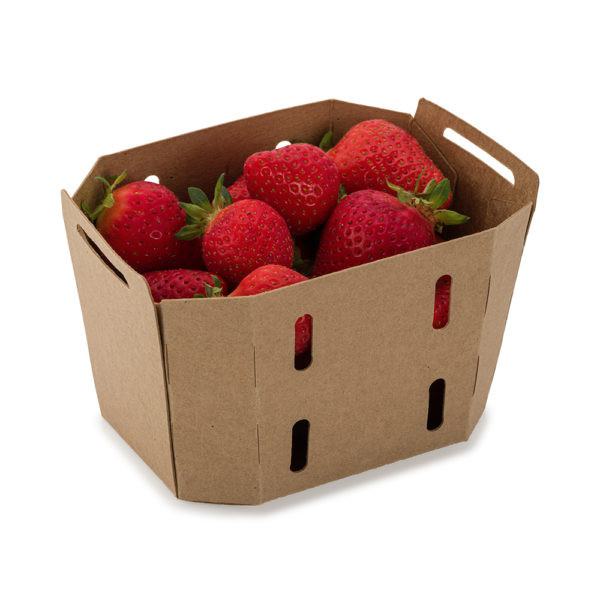
Cardboard Punnets & Trays

Sustainable Food Packaging
Westpak Group Ltd supply diverse and sustainably-aware packaging solutions to some of the biggest names in the UK’s grocery and foodservice industries. The company’s reputation is built upon over 20 years of experience and is underpinned by its commitment to ‘bold thinking, reliable execution’. Westpak are proud to offer a comprehensive and continually evolving product collection as well providing impartial advice to clients and helping them realise tailored packaging solutions where required.
The company was founded in 1999 by Doug Hicks, who demonstrated an undeniable commitment to customer service with an ability to view the industry’s challenges and opportunities from his customers’ perspective. Over the last 22 years, the business and evolved significantly but remains family-run with a close-knit ethos. Managing Director, Seth Hicks, and his team have continued to build upon the company’s customer-centric approach and have matched this with major investments and continued growth in infrastructure and logistical capabilities.
The company now operates from its contemporary offices in Keston, Kent, and maintains close ties with its vast and highly modernised warehouse facility, also based in Kent.
Westpak’s bold thinking encapsulates a range of attributes. The company has built a strong reputation for its impartiality in advising clients on the best solutions for their exact needs, taking into account a range of different stakeholder considerations. The advice we provide is guided by a true level of expertise, not just in relation to immediate packaging considerations, but also around wider issues of sustainability and environmental impact. We are able to advise on the ideal sustainable solution with a thorough and accurate understanding of the broad environmental impact of each product.
We also place a strong value on innovation, where we seek to only work with the leading suppliers who are able to utilise the latest technology, processes and efficiencies. We continually seek to be ‘ahead of the curve’, not just understanding our customers’ needs, but predicting and proactively responding to future industry considerations and developments.
Grocery
Sustainable Food Packaging
1-10
United Kingdom
Unit 2B Kimberley Business Park, Blackness Lane , Keston Kent BR2 6HL
Chris Fiander, Marketing Manager, Westpak Group Ltd
At Westpak, we pride ourselves on being true experts in sustainability. Part of this expertise lies in our understanding that sustainability is a highly complex topic driven by various considerations. To effectively assess these requirements, it’s essential to have a full understanding of the latest terminology, developments and principles that underlie the broader sustainability movement. As such, our new sustainability hub provides a detailed exploration of the most critical sustainability terms and concepts including answers to some of the most frequently asked sustainability questions and a comprehensive glossary of a wider range of environmental terms, processes and materials.
Below are a selection of FAQs from our new sustainability page. For more information, and to explore our full sustainability glossary visit westpakuk.com/sustainability
The terms ‘biodegradable’ and ‘compostable’ should not be used interchangeably. Biodegradable products should be able to break down naturally. This natural process follows three key stages: ‘biodeterioration’, ‘biofragmentation’, and ‘assimilation’. Compostable packaging, by contrast, requires more specific environmental factors in order to successfully be broken down. This can may include certain temperature or moisture level thresholds, for example. Such products will also vary in their ability to be recycled. Paper and card-based products, for example, are compostable and are also recyclable. By contrast, Biopolymer and Bio-plastic products classed as compostable are not recyclable.
The terms ‘sustainable’ and ‘eco-friendly’ are often used broadly in their application, but share a common concern for various ecologically detrimental processes. ‘Sustainability’ gained prominence as term following the publication of the ‘Brundtland Report’ in 1987, which positioned the concept around economic, social and ecological considerations. The term is generally seen as relating to the idea of a harmonised relationship between human life and environmental considerations. The term ‘eco-friendly’ is concerned purely with environmental considerations. While broad in its use, it refers to the idea of products and processes having the smallest possible negative impact on the environment.
At Westpak, we realise that while sustainability may be a vital consideration for both stakeholders and consumers, it isn’t necessarily simple. We work with businesses at key points in the food distribution chain to realise their sustainability goals while minimising disruption and risks to their business model. We can advise on an array of various, complex environmental packaging attributes such as whether it is recycled, recyclable, re-useable, biodegradable, compostable etc. We can also advise on the pros and cons of each attribute, the extent of their mutual exclusivity and the broad sustainable impact of each option. We can also advise on the suitability of each option for the most seamless integration with your current businesses model.
Recyclable items of packaging are those which are able to be recycled at their end-of-life stage. Recycled packaging, by contrast, is that which already contains previously recycled materials. A key reacted term is ‘recycled content’ which refers to the ratio of recycled material present in the new product. This ratio can vary significantly for different recycled products.
In the UK, various symbols are used to indicate the environmental characteristics of certain products and packaging. ‘Recycle’ and ‘Rinse | Recycle’ symbols are commonly shown on items that are widely processed for recycling. Some products may also often show nominations of ‘recycle’ and ‘don’t recycle’ icons indicating that certain parts of the item can be recycled with other part will need to be removed and processed separately.
Various other symbols and icons are used with varying meanings. ‘The green dot’ symbol, can often be misinterpreted, as it only signifies that the producer has made contributions to recycling efforts. The symbol does not actually necessarily correlate with any recyclable properties of the item itself. Similarly, the icons known as the ‘mobs loop’ only signifies that the item in question is able to potentially be recycled. Recyclable plastics, however, are often more clearly marked through being assigned a number as part of the ‘resin identification code’. Numbers from 1-7 are assigned to different plastics in accordance with their specific recyclable properties. Paper and cardboard items will often show the ‘recycle’ or ‘Rinse | Recycle’ icons. In addition, such products may also show the Forest Stewardship Council (FSC) logo where they have been sourced from forest that adhere to the FSC’s standards.
Products recognised as being industrially compostable to EN 13432/14955 standards will often show a ‘seedling’ logo. Many items will also show a ‘home composting’ logo which signifies the products can be composted under more natural, non-industrial processes.
More generic terms on various forms of packaging, such as ‘eco-friendly’, can often be misleading for consumers due to specific ways products may need to be processed at the end-of-life stage to ensure their green credentials are realised.
We use over twenty materials in our packaging products. This includes kraft paper, Blown Bended Polythene, Biaxially-oriented polypropylene (BOPP), Cardboard (with additional CPET and PE coatings), Cartonboard, Corrugated Cardboard, Expanded polystyrene (EPS), Glass Fibre, High-density polyethylene HDPE, Low-density polyethylene (LDPE), Metals, Polyethylene (PE), Polyethylene terephthalate (PET or PETE), Polypropylene (PP), Polyvinyl chloride (PVC) and Recycled polyethylene terephthalate (rPET). All these materials are listed in our sustainability glossary with details on each including their recyclable and/or other environmental credentials.
Sustainability around packaging continues to be the primary trend for the UK food packaging industry. While there are notable differences in compostable and biodegradable packaging, or recyclable and recycled packaging, this broad array of ‘sustainable’ solutions is drawn together by a clear preference over non-recyclable packaging that moves directly from single use to landfill disposal. 2022 will also see a ‘plastic tax’ introduced on plastic with minimal or absent recycled materials. One of the largest supermarket chains, Tesco, has also recently announced that it has removed more than 1 billion pieces of plastic from its UK business. We have also seen rising popularity in reusable packaging, particularly in grocery retail stores. Dispensing stations for grocery goods such as pastas and cereals may increase in popularity.
Show more ▼
Chris Fiander, Marketing Manager, Westpak Group Ltd
Cited as one of the four ‘Rs’ of recycling – ‘reduction’ is currently one of the key packaging objectives across the grocery and foodservice industries. Supermarkets are demonstrating their efforts to remove vast amounts of plastic packaging as well as introducing various refill stations across their stores. But while consumers have come to expect a significant reduction in packaging, the stresses of logistics and transport processes largely remain unchained. As such, revised packaging designs will still need to be robust and durable to remain fit-for-purpose. So can supermarkets, producers and other retailers balance these two, seemingly conflicting priorities?
The first step is to remove any assumptions and gain as full an understanding as possible with regard to each piece of packaging’s unique requirements and purposes. For example, it’s vital to assess how much packaging strength and rigidity is actually truly needed. If an existing design is significantly over-engineered, then a reduction in packaging volume could still offer a sufficient level of protection and durability. Understanding exactly what requirements need fulfilling will also be invaluable in guiding the design process from the ground-up for a more streamlined design.
Secondly, it’s important to asses what we actually mean by terms such as ‘rigid’, ‘hard-wearing’, ‘robust’ or ‘reliable’. In many instances, a packaging design may not necessarily need to have pure ‘strength’ as its key priority, but rather other considerations such as being resistant to high moisture levels or withstanding varying and extreme temperatures.
Thirdly, we need to to consider all other packaging considerations. An emphasis on packaging ‘reduction’ rarely stands in isolation. Rather, reduced packaging aims to work in harmony with wider sustainability objectives. Simply reducing the volume of packaging and incorporating a material that is less environmentally-friendly may be counter-productive against wider sustainability objectives.
The key to tying all these considerations together will largely centre around an expertise when it comes to the industry’s latest materials and manufacturing processes. The packaging industry is highly innovative and fast-moving. Assessing a project’s most suitable options based on last year’s manufacturing capabilities will drastically limit the scope for success. As well as being as up-to-date as possible and keeping close ties with all our suppliers and manufacturers, we also regularly look to incorporate new manufacturing technologies proactively, staying ‘ahead of the innovation curve’ as much as possible.
So how have we done this previously? Working with Co-op, we were able to find a particular paper-based material that offered high water-resistance to accommodate the their ‘living lettuce’ range. The resulting design was able offer a stripped-back, light-weight and highly sustainable option that utilised the latest material innovations to fulfil the range’s precise requirements. We also worked with Waitrose as they launched their ‘Unpacked’ initiative (which aimed to remove as much packaging as possible from a number of their fresh produce lines). They needed plastic-free packaging to transport fruit from growers to stores and also provide a way for shoppers to practically transport the produce home. We developed an intricate, recyclable Kraft cardboard punnet with a separate ‘latticed’ lid. This design was able to tick every box in the project brief – the packaging design was minimal, recyclable, on-brand and logistically beneficial. As a final example, we worked alongside a local watercress farm, who supply various wholesalers, retailers and urban food markets. The farm wanted to move away from polystyrene boxes which offered no sustainability value as well as being logistically problematic. In this case, we developed a design that utilised two separate materials for distinct purposes – a stripped back cardboard box for that offered reduced packaging whole maintaining rigidity, and a a thin water-resistant lining which provided protection against high moisture levels.
These examples show that reduced packaging can absolutely still offer the strength needed for a given product line. Crucially, however, this needs to be led by a highly innovative and proactive approach within the market and one that fully incorporates all other packaging considerations to work towards a more sustainable overall solution.
Show more ▼
Chris Fiander, Marketing Manager, Westpak Group Ltd
The upcoming COP26 summit in Glasgow has gathered a huge amount of media attention with this year’s event seen as vital for the fight against climate change. Countries will be announcing the measures they’ve taken (following the commitments of 2015’s Paris Agreement) as well as presenting clear and ambitious targets for reducing emissions over the years to come. As the start of the conference draws near, voices from various industries have each outlined their specific hopes for the event. But is this process in danger of confusing the perception and expectation of summit’s objectives? Will this, in turn, create a backdrop limiting how much the event can be viewed as a success? Additionally, to what extent do various industries actually need COP24 to address their concerns for sustainability initiatives to be enhanced?
In many ways, it could be argued that COP26 has succeeded before its started. Due to being such a milestone event, many businesses (regardless of industry) have viewed the conference as a useful deadline by which to pro-actively assess their own sustainability initiatives or take key steps to becoming as carbon-neutral as possible. The overall publicity around the event has also re-highlighted for many the vital importance of aiming to limit global warming to 1.5 degrees – a continuing objective of the Paris Agreement.
The extent to which the summit can truly be deemed a success will largely depend on how well it fulfils it objectives. While this may sound obvious, the issue becomes trickier when we ask where those objectives come from. COP26 has been clear in outlining its own goals: ‘secure global net zero by mid-century and keep 1.5 degrees within reach’, ‘adapt to protect communities and natural habitats’, ‘mobilise finance’ and ‘work together to deliver'(1). These four objectives are ambitious and far-reaching and many would say that’s exactly what they need to be. The key issue is whether business and the public accept the summit’s self-declared goals or will they demand their own objectives? Voices in the construction industry, for example, have commented that they are “engaging with partners including the United Nations Climate Champions Team and the Cabinet Office COP Unit to enable the sector to be represented appropriately at the event“(2). Those in the transport industry, as another example, have also voiced their concerns “One of the key points for discussion and scrutiny in November will be the Government’s plan for the decarbonisation of transport“(3). The food industry (as a close example to the Westpak team) has also shared its concerns. For example, Marcus Gover, WRAP CEO has commented, “Much attention will rightly be paid to energy generation and transport at COP26, but we ignore the food system at our peril. There is little talk about the contribution that strategies around food and drink can have to climate action, and it is vital we raise awareness and drive action among policymakers and businesses at COP26“(4).
Key international objectives to tackle climate change discussed at the event are clearly vitally important. But what about more industry-specific considerations? As Marcus Gover’s comments highlight, there is of course an importance around the event’s ability to influence policymakers and drive general awareness around issues. However, businesses across various industries – including those in the grocery and foodservice industries – have already shown a huge degree of self-motivation and pro-active engagement with an array of impressive sustainability commitments. As many such initiatives are also, in-part, driven by consumer expectations and preferences, we commonly see a chain reaction of sustainability initiatives across various businesses within an industry as each aims to keep pace with the pack. Such market-led sustainability initiatives have been commonplace for packaging in the grocery industry. For example, supermarkets have maintained a high level of momentum and focus on reducing and removing plastics, as well as offering more recyclable packaging across their ranges. More specific initiatives, such as product refill areas, have also been seen across numerous retailers. Well-established industry bodies have also been instrumental in providing sustainability parameters and targets for the grocery and foodservice industries. Wrap’s ‘Plastic Pact’, for example, has given clear targets for 2025 which every major supermarket has signed up for. These targets include ‘eliminating problematic or unnecessary single-use packaging through redesign, innovation or alternative (reuse) delivery model’, ‘100% of plastics packaging to be reusable, recyclable or compostable’, ‘70% of plastics packaging effectively recycled or composted’ and ‘30% average recycled content across all plastic packaging'(5).
The sustainability relationship between business and conferences such as COP26 feels closely intertwined. As businesses and consumers will maintain pressure for ambitious targets to be set at such events. Similarly, policies derived from major conferences can further empower brands to accelerate sustainability progress. Our view is one that welcomes limitless change, innovation and evolution across the grocery and foodservice industries. However fast new packaging innovations appear within the market, whether sparked by new industry regulation or through the industry’s own desire for change, we’ll always be ready to not just keep pace with a more sustainable industry, but to also help shape it.
1: ukcop26.org/cop26-goals
2: constructionleadershipcouncil.co.uk/constructzero/cop26/
3: shma.co.uk/our-thoughts/cop26-and-the-uks-drive-to-net-zero-transportation/
4: https://wrap.org.uk/media-centre/press-releases/food-and-drink-greenhouse-gas-emissions-must-be-key-priority-cop26-says
5: https://wrap.org.uk/taking-action/plastic-packaging/the-uk-plastics-pact
Show more ▼
Chris Fiander, Marketing Manager, Westpak Group Ltd
It’s no secret that the packaging industry has endured significant issues in the global supply chain for a sustained period. Understanding the origin of these challenges and the precise affects they are having on the industry now isn’t a simple task. Many factors remain deeply intertwined, affecting logistics on a global scale. In addition, while many of these challenges have either been caused by, or exacerbated by the coronavirus pandemic, a number of non-Covid related factors have also further amplified issues. We’ve highlighted some of the most significant issues as well some of the top tips for how to best overcome these challenges.
ONLINE SHOPPING SURGE STRAINS CARDBOARD SUPPLY
We’re all familiar with the consumer trend in the ever-growing popularity of online shopping - a trend was only accelerated further by the pandemic. This placed a significant major on the supply of cardboard and packing resources. As the BBC commented, “The boom in online ordering during the pandemic has also meant rocketing demand for cardboard, as consumers have started taking delivery of everything from bicycles to houseplants”(1).
OVERWHELMING DEMAND FOR SUSTAINABLE PACKAGING
The strong consumer demand for sustainability has been one of the core strengths for the packaging industry over recent years. However, this major boost in popularity for materials such as cardboard and Kraft has created a level of demand that many manufacturers have simply struggled to keep pace with. US-based ‘Hawke Media’ comments, “Due to environmentally-friendly policies around the globe, many brands – especially in eCommerce – now use paper packaging …Over time, paper mills’ demand for raw paper materials has reached the point where demand begins to exceed supply”(2). This imbalance between supply and demand has also certainly not been helped by the pandemic. As the world returned to more regular businesses activity following lockdown restrictions, suppliers were faced with a global surge in demand for cardboard, Kraft and other paper-based packaging - further straining their manufacturing capabilities.
RAW MATERIALS
A number of key raw materials have been in increasingly limited supply internationally. While lockdown measures are partially accountable for this trend, there are also a number of other contributing factors. For example, there has been widespread reporting on the prevalence of ‘force majeure’ events affecting supply. Such events have been attributed to a range of factors including extreme weather and storms in the United States as well as the much-publicised Suez Canal ship blockage. Increased demand from some of the largest nations in the world has also been linked to the material shortages faced elsewhere. These shortages have, in turn, led to a sharp increase in prices which is further affecting the industry. More recently still, we have also seen the effects of increase energy costs on production facilities. Paper mills, for example, are known for their energy bills comprising a significant proportion of their overall operating costs.
SPIRALLING SHIPPING COSTS
The Coronavirus pandemic has had a profound effect on the global shipping industry both during the height of the pandemic as well as creating a lasting issues which continue to hamper international logistics. The current situation has come to be widely seen as defined by two major issues - rocketing shipping costs and widespread container shortages. The urgent delivery of PPE equipment required during the early stages of the pandemic had a long-term affect. As Forbes highlights, “Many containers that carried millions of masks to countries in Africa and South America early in the pandemic remain empty and uncollected because shipping carriers have concentrated their vessels on their most profitable Asia-North America/Europe routes”(3). The effects that these issues can have on shipping prices for certain routes can be stark.
HGV DRIVER SHORTAGES
Once shipping containers do eventually reach their destination, we have also felt the effects of the shortage of HGV drivers. The driver shortage has of course been widely publicised in the UK, largely to the fuel crisis which led to swathes of people queuing for petrol and diesel. The HGV driver shortage is an issue that pre-dates the pandemic but has certainly been worsened by Coronavirus and, arguably, also by Brexit.
THE INDUSTRY’S BIGGEST PLAYERS
Another major factor to consider is the shape and structure of the packaging industry. A number of major global brands being able to continue their packaging supply will inevitably cause shortages elsewhere when the international supply starts to be limited. For example, many international fast food chains and major home-delivery online retailers are of course for the vast scale of their operations and the enormous packaging supply that this requires.
TOP TIPS
While there is no single course of action that can eradicate the supply challenges businesses are currently facing, there are still best practices to minimise the effects of these issues. Firstly, and perhaps most importantly, we would urge businesses to plan and order as far in-advance as possible for their packaging supplies. By giving themselves as much time as possible, they are minimising the damage of any potential delayed lead-times from across the industry.
Secondly, it’s important for businesses be open to identifying secondary, alternative preferences for packaging materials and carefully consider all relevant sustainability implications. For example, while a material such as Kraft might be able to offer a great range of sustainability benefits, other materials (which offer other sustainability credentials) may be more readily available due to not being quite so highly in demand.
We would also encourage businesses to simplify the ordering process as much as possible and think about avoiding amendments that could further lengthen packaging lead-times. This could include avoiding implementing new corporate branding and revised graphics.
For more information on Westpak visit https://westpakuk.com/
(1) www.bbc.co.uk/news/business-55878062
(2) hawkemedia.com/insights/paper-and-packaging-pricing-in-2021/
(3) www.forbes.com/sites/garthfriesen/2021/09/03/no-end-in-sight-for-the-covid-led-global-supply-chain-disruption
Show more ▼
Chris Fiander, Westpak Group Ltd
Supermarket home delivery is something we’ve all become very accustomed to, and it’s easy to see why – determining the delivery date and time-slot for your weekly shop is the ideal convenience for fitting-in with our ever busy lifestyles. In addition to their convenience, these delivery services are also typically defined by their uniformity. That is, the experience offered by each grocery retailer is largely very similar with the customer journey following an almost standardised process.
More recently, a growing trend has seen retailers offering consumers an extra layer of convenience by enabling certain grocery items to be delivered within minutes as part of a much faster, ‘on-demand’ service. This new model has not yet brushed aside the more traditional home delivery service (for now at least), but certainly seems to be gaining traction amongst consumers.
In addition to simply offering a much faster service, the rapid delivery model also seems to be differentiated by another core characteristic – a variety of logistical processes with different retailers fulfilling their on-demand service through varying delivery partners and technology platforms. Of course, this is by no means a bad thing… it simply shows that the underlying technology to prop-up such instantaneous delivery is evolving at serious speed.
A handful of supermarkets are offering rapid delivery services through their own channels, often via smartphone apps that are branded to sit firmly under the parent company name. Other retailers, however, are embracing working alongside delivery providers more commonly associated with the foodservice industry. Interestingly, such partnerships are often actively promoted by retailers, keen to publicise their connection to such ‘foodservice-associated’ delivery partners, many of whom are now household names in their own right. As an additional observation, these two camps (those that facilitate their own on-demand delivery and those that utilise third party partners), do not seem to operate with mutual exclusivity. In fact, a number of grocery retailers are happy to offer their own fast-track services in addition to working alongside third parties.
Retailers offering their own rapid delivery services seem to currently be in the minority. Last year, Asda announced the launch of its one-hour delivery service(1). Sainsbury’s is running its ‘Chop Chop’ app(2) while Tesco is also offering an app called ‘Whoosh'(3), both of which are fully branded as part of Sainsbury’s and Tesco respectively.
These same three retailers are also making additional use of third-party partners for rapid delivery. Asda is working alongside Just Eat(4), Sainsbury’s is working with both Uber Eats and Deliveroo(5) and Tesco has launched canned a trial with a delivery app called ‘Gorillas'(6). Retailers who are leaning more fully towards third party on-demand partners include Co-op(7) and Morrisons(8) who are both currently working with both Deliveroo and even Amazon Prime!
Perhaps more significant than simply offering consumers an extra tier of convenience is the effect these partnerships may have in blurring the lines between the foodservice and grocery industries – particularly in the eyes of the consumer. The idea of on-demand order fulfilment has in itself been a defining characteristic of the foodservice industry. Furthermore, consumer perception as to what types of products constitute as ‘grocery’ or ‘foodservice’ items may also be shifting… As a quick example, a friend of mine recently hosted dinner for a number of us and needed to get a dessert delivered quickly. Via either Uber Eats or Deliveroo, the chosen cheesecake quickly arrived as a lone item from Sainsbury’s. From the consumer perspective, was this perceived a foodservice transition or grocery purchase? Numerous foodservice restaurant chains would no doubt offer cheesecakes, ice cream or other similar dessert items. In this case, the supermarket branded packaging may be the only element to mark the consumer experience as being linked to a grocery retailer. More importantly still, does this in any way hamper the ‘foodservice experience’ for the consumer? Does a cheesecake that arrives as a dessert option from a pizza chain, for example, feel more special or differentiated for consumers than what may essentially be the same product arriving from a supermarket? In short, how much of the grocery or foodservice experience remains tangible and how much of it remains a branding exercise? A key distinction will largely relate to food that requires any additional preparation at home, once delivered. But for grocery items that are ready to consume on delivery, the distinction is less clear. This will largely apply to non-heated items, but there are a number of heated products that can also delivered by supermarkets, fully prepared. For example, even back in 2018, Asda announced a trial service to offer freshly-bakes pizza to customers via Just Eat(9).
Andrew Kenny, Managing Director UK at Just Eat, recently commented (December 2021) on their partnership with Asda, “We live in an on-demand world, and as the UK’s largest food delivery aggregator, we want to ensure we are getting our customers the food they want, when they want it. Our tie up with Asda means we can help people access everything from store cupboard essentials to fresh groceries in a matter of minutes. It’s a really exciting development and we look forward to working with Asda on what will be a popular addition for our consumers”.
More recently still, we have also seen growing attention around apps and brands that aim to focus purely on the ‘rapid grocery market’. Such providers are neither large, established supermarket chains, nor are they using well-established delivery providers. Instead, they are carving out a new path offering the full rapid grocery experience under their name as part of less fragmented, more unified and cohesive approach. Contemporary apps such as ‘Zapp’, for example, have been noted for successfully attracting significant levels of investment in relatively short time-frames(10).
Grocery items will be identical whether purchase in-store or via an on-demand delivery app. As such, differentiated packaging seems unnecessary. It’s also worth considering that in the consumer mindset, these products might not have to try to be seen as more ‘foodservice’ to succeed via on-demand delivery. Rather, the consumer may already be altering their perception of what ‘foodservice’ is and grocery branded items are now perfectly acceptable to fit-in with that overall consumer experience. It may be the case that the only packaging adaptation needed from grocery retailers might be to ensure packaging is sufficiently robust to withstand additional delivery and arrive to the consumer in ideal condition.
(1) https://corporate.asda.com/newsroom/2021/06/30/asda-launches-one-hour-express-delivery-service
(2) https://chopchopapp.co.uk/
(3) https://www.tesco.com/groceries/en-GB/zone/whoosh
(4) https://www.justeattakeaway.com/newsroom/en-WW/208083-just-eat-partners-with-asda-to-launch-grocery-partnership-in-the-uk
(5) https://www.thegrocer.co.uk/online/sainsburys-partners-with-uber-eats-and-deliveroo/649869.article
(6) https://www.cityam.com/tesco-joins-forces-with-gorillas-delivery-app/
(7) Co-op & Deliveroo https://shop.coop.co.uk/
Co-op & Amazon Prime https://www.co-operative.coop/media/news-releases/co-op-partnership-with-amazon-rolls-out-to-offer-added-convenience-in
(8) Morrisons & Deliveroo https://www.morrisons-corporate.com/media-centre/corporate-news/deliveroo-launches-hop-a-new-rapid-grocery-service-from-delivery-only-stores-with-morrisons-food/
Morrisons & Amazon Prime https://www.morrisons-corporate.com/media-centre/corporate-news/morrisons-is-now-on-amazon.co.uk/
(9) https://corporate.asda.com/article/freshly-baked-pizza-now-available-from-asda-on-just-eat
(10) https://www.thegrocer.co.uk/online/lewis-hamilton-backs-ultra-fast-grocery-app-zapp-as-part-of-200m-raise/663956.article
Show more ▼
Chris Fiander, Westpak Group Ltd
‘Greenwashing’, also sometimes known as ‘green sheen’, is becoming an increasingly common term in discussions around commercial and political sustainability. The term refers to the to an organisation’s exaggerated, misleading or even fraudulent sustainability claims around its products, services or processes in a bid to enhance their public perception without truly committing to more eco-friendly practices. Clearly, there is justified criticism around certain brands adopting such deceptive tactics. But has the problem of greenwashing been overstated? Is the term actually helpful? And is it even possible to give a precise definition?
Let’s first outline some of the clear problems that greenwashing presents. A primary objection centres around the unethical practice of misleading the public. Without question, consumers increasingly view their purchasing choices as their ability to either validate or protest against the environmental position of a given brand or product. The willingness of certain brands to deliberately mislead consumers in this way as a shortcut to sales growth is of serious concern. Secondly, such activities could also discourage competitors from either adopting or continuing with a more authentic environmental approach. Greenwashing also poses a serious issue in masking the true picture of an industry’s current level of sustainability. In this sense, market transparency has never been more vital. Greenwashing can also trivialise the importance of genuine sustainability efforts. Consumers may become increasingly aware of brands seeping into greenwashing exercises, and if that commercial activity remains unchallenged, it will set an increasingly lower benchmark for environmental authenticity.
While these are all valid concerns, there are also key questions to ask about widespread the issue is, and even if fighting greenwashing head-on is the best approach. First, we have to ask what we truly mean by ‘greenwashing’. Making totally false claims regarding adopting environmental business practices is clearly a problem. However, in some cases, people may label a business as guilty of greenwashing if only a few of its policies and process are deemed environmentally-friendly – clearly a far less deceptive scenario. This also bring into focus the question ‘does a pure model of adequate sustainability actually exist?’ Underneath umbrella-terms such as ‘environmental’, ‘eco-friendly’ and ‘sustainable’ there are a range of various sustainability considerations such as accurately assessing carbon footprints, identifying the ease and likelihood of certain materials being recycled, considering both carbon-offsetting and emission reductions as part of carbon neutrality commitments etc. The debates around the ideal approach for such issues are far from being open-and-shut, with different conclusions often reached for each scenario and unique variables and defining characterises are taken into account.
In brazen cases of organisations misleading consumers, we can also already take reassurance in the stricter legal measures coming into effect. For example, in September 2021, the Competition and Markets Authority (CMA) published the ‘Green Claims Code’ as part of a warning to businesses to ensure their environmental claims are legally compliant. The CMA also stated its intention to conduct a review of “misleading green claims” in early 2022.
There could also be an argument to be made that the term ‘greenwashing’ is actually unhelpful from a sustainability standpoint? It’s certainly possible that businesses could be put-off from taking their first steps to enhanced sustainability for fear of not being able to go far enough, quickly enough and consequentially being labelled as inauthentic. Does such an accusation pose an even greater PR risk to some firms than remaining ‘under the radar’ and avoiding joining the wider sustainability movement altogether. (Of course, it could be counter-argued that businesses have perhaps ran out of time to be ‘under the radar’ in this sense with the only options remaining being ‘half-in’ or ‘all-in’ with regard to their environmental credentials [but this may be more true of certain industries and consumer demographics over others]). As a similar point, the fear of attracting the ‘greenwashing’ label could also discourage brands from pro-actively pursuing the PR benefits of increased sustainability measures. Many businesses will need to see how investing in enhanced sustainability will positively impact their bottom-line and PR activity will inevitably be required to achieve that. Consumers and competitors may feel frustration in a business disproportionately over-stretching its PR activities in relation to it’s true sustainability investment level. However, it could be argued that the more we allow business to gather PR benefits from their efforts, the more it will encourage them to take further, additional steps in the right direction over the long-term.
Show more ▼
Chris Fiander, Westpak Group Ltd
The latest food packaging technology has provided a major leap forward for the sustainability of heat-sealed fresh produce punnets and trays. A series of new punnet and tray designs, launched by Westpak Group Ltd, offer grocery retailers and their suppliers a set of commercially viable paper-based alternative to plastic punnets.
These heat-seal card punnets are the culmination of a key objective for the Westpak brand – to break the grocery industry’s long-standing dependence on plastic punnets for commercial heat-sealing processes. Westpak have undertaken a series of testing and refinement processes to ensure the most seamless possible integration of this exciting new material technology.
The new range is comprised of a 500g microflute punnet and a 250g pressboard produce tray, both of which are fully recyclable and offer the option of bespoke branding. The 500g microflute also benefits from providing side ventilation holes, being able to be heat sealed in as little as half a second and the additional environmental benefit of being manufactured from recycled content. The 250g pressboard tray option features a Polyethylene (PE) lining (adhering to OPRL recycling guidelines of under 10%), as well as being compatible with K37/SPS tooling and being FSC certified.
Seth Hicks, Managing Director at Westpak Group Ltd commented, “The development of our heat seal card punnets really lies at the core of what Westpak is all about – bold innovation that is firmly rooted around driving long-term sustainability enhancements across the food packaging industry. The development of this new technology is something the industry and consumers alike have been eagerly anticipating for quite some time and we’re proud to be at the forefront of this change. The potential for this technology to be utilised across the industry is huge and represents a significant step forward in helping some of the best-known retailers work towards their ambitious corporate sustainability goals”.
Show more ▼
Chris Fiander, Westpak Group Ltd
We’re delighted to confirm that we’re now certified to ISO 9001 status. This latest recognition joins our other range of certifications and including being Grade AA certified to BRC Storage & Distribution as well as our Sedex membership. The ISO 9001 standard is based on a number of key areas including “strong customer focus, the motivation and implication of top management, the process approach and continual improvement”(1). The ISO family of accreditations is one of the most recognisable with businesses from more than 170 counters certified to this standard.
More specifically, the ISO 9001:2015 standard specifies specific requirements for a quality management system for businesses that “provide products and services that meet customer and applicable statutory and regulatory requirements”(2). ISO also highlight four key areas in which the 9001:2015 standard supports their ‘Sustainable Development Goals’ – ‘end poverty, ‘industry, innovation and infrastructure’, ‘responsible consumption and production’ and ‘life below water'(2). For more information on ISO’s sustainable development goals visit https://www.iso.org/sdgs.html.
For more information on our full range of accreditations and our distribution capabilities visit westpakuk.com/distribution
(1) https://www.iso.org/iso-9001-quality-management.html
(2) https://www.iso.org/standard/62085.html
Show more ▼
Chris Fiander, Westpak Group Ltd
It’s no secret that the packaging industry as a whole has endured significant issues in the global supply chain for a sustained period. Getting to the bottom of these challenges isn’t a simple task. Many contributing factors are deeply intertwined with each other, affecting logistics on a global scale. In addition, while many of these challenges have either been caused by, or exacerbated by the coronavirus pandemic, a number of non-Covid related factors have also further amplified issues. We’ve highlighted some of the most significant causes below as well our top tips for how to best work within the challenges the industry faces.
The broad consumer trend of moving to online shopping was only amplified by the pandemic. This in turn placed a significant strain on cardboard and packing resources. As the BBC commented, “The boom in online ordering during the pandemic has also meant rocketing demand for cardboard, as consumers have started taking delivery of everything from bicycles to houseplants”(1). The guardian also highlighted a related issue, “The nation’s online shopping habit is causing a cardboard shortage as empty delivery boxes are hoarded in homes or stuck in council recycling bins”(2). This has also had a detrimental effect on the rate of cardboard recycling, limiting the rate of materials being fed back into the manufacturing loop.
The strong consumer demand for sustainability has been one of the core strengths for the packaging industry over recent years. However, this surge in demand for materials such as cardboard and Kraft has created a level of demand that manufacturers have struggled to keep pace with. ‘Market Watch’ comments, “The growing demand for kraft paper packaging solutions among various end-user industries such as food & beverages, pharmaceuticals, grocery bags, and consumer durables, and the increasing urban population across regions are factors that are driving the growth of the kraft paper market”(3). Additional sources have also stated, “Due to environmentally-friendly policies around the globe, many brands – especially in eCommerce – now use paper packaging …Over time, paper mills’ demand for raw paper materials has reached the point where demand begins to exceed supply”(4). This imbalance between supply and demand has not been helped by the pandemic. As the world returned to more regular businesses activity following lockdown restrictions, suppliers were faced with a global surge in demand for cardboard, Kraft and other paper-based packaging further straining their manufacturing capabilities.
A number of key raw materials have been in increasingly limited supply. While lockdown measures are partially accountable for this trend, there are also a number of other contributing factors. For example, there has been widespread reporting on the prevalence of ‘force majeure’ events affecting supply. As one article highlights, “In March 2021, IVK Europe reported on the wave of force majeure statements from European raw material suppliers and its consequences for manufacturers of products made of plastics. The organisation, which represents plastic sheet producers, has now issued an update, saying that there is no improvement of this situation in sight”(5). Such events have been attributed to a range of factors including extreme weather and storms in the United States and the much publicised Suez Canal ship blockage. Increased demand from larger countries has also been linked to the material shortages faced elsewhere, “The large number of financially strong overseas buyers is now contributing to fewer raw materials being available for European countries”(6). These shortages have, in turn, led to a sharp increase in prices which is further affecting the industry. More recently still, we have also seen the affects of increases in energy costs on production facilities. Paper mills, for example, are known for the energy costs comprising a significant proportion of their overall operating costs.
The Coronavirus pandemic has had a profound effect on the global shipping industry with a situation that has become defined by rocketing shipping costs and widespread container shortages. The urgent delivery of PPE equipment required during the early stages of the pandemic has had a long-term affect. As Forbes highlights, “Many containers that carried millions of masks to countries in Africa and South America early in the pandemic remain empty and uncollected because shipping carriers have concentrated their vessels on their most profitable Asia-North America/Europe routes. In other words, there are fewer containers in circulation, creating an imbalance in usable supply and demand”(7). The effects that these issues can have on shipping prices for certain routes can be stark. As a point of reference, the same source states “The price to ship a container from China to the U.S. West Coast has gone up 13-fold from pre-COVID levels”.
Once shipping containers do find themselves in port, we have also felt the affects of the shortages of HGV drivers. Due largely to the petrol crisis, the driver shortage has been widely publicised. It’s an issue that pre-dates the pandemic but has certainly been worsened by Coronavirus and, arguably, also by Brexit. A BBC article highlights the findings of an Office for National Statistics (ONS) study, “The Annual Population Survey produced by the Office for National Statistics (ONS) estimates that there were 16,000 fewer EU nationals working as HGV drivers in the year ending March 2021, than in the previous year. Even before Covid, the overall estimated shortage was about 60,000 drivers.” There has also been comment on the role Coronavirus has played in the driver shortage, “As travel became increasingly restricted last year, and large parts of the economy shut down, many European drivers went home. And haulage companies say very few have returned”(8)
Another major factor to consider is the shape and structure of the packaging industry. A number of major global brands being able to continue their packaging supply will inevitably cause shortages elsewhere when supply becomes limited overall. For example, McDonald’s is know to have “more than 39,000 restaurants” internationally(9). The scale of packaging such an operation requires will eclipse the needs of smaller brands. Similarly, brands such as Amazon are known for the vast quantities of packaging materials used. As one article states, “It’s been widely reported that Amazon and other big retailers have snapped up most of the world’s cardboard supply to fulfil online orders, leaving smaller businesses unable to get their hands on boxes of their own …While data is hard to come by, analysts estimate that Amazon shipped 415 million packages in July 2020 alone”(10).
While there is no single course of action that can eradicate the supply challenges businesses are currently facing, there are still best practices to minimise the effects of these issues. Firstly, and perhaps most importantly, we would urge all our clients to plan and order as far in-advance as possible for their packaging supplies. But giving yourself as much time as possible, you are minimising the damage of any potential delayed lead-times from across the industry. Secondly, it’s important to be open to identifying a secondary, alternative range of packaging materials and carefully consider all relevant sustainability implications. For example, while a material such as Kraft might be able to offer a great range of sustainability benefits, other materials, which offer other sustainability credentials may be more readily available. We would also encourage businesses to simplify the process as much as possible and think about avoiding processes that could further lengthen packaging lead-times. This could including avoiding implementing new corporate branding and revised graphics.
(1) www.bbc.co.uk/news/business-55878062
(2) www.theguardian.com/business/2021/jun/22/uk-online-shopping-boom-fuels-cardboard-shortage-as-households-hoard-boxes
(3) www.marketwatch.com/press-release/kraft-paper-market-insights-report-future-growth-revenue-analysis-and-forecast-till-2025-2021-09-23
(4) hawkemedia.com/insights/paper-and-packaging-pricing-in-2021/
(5) packagingeurope.com/no-end-in-sight-to-ongoing-shortage-of-raw-materials/
(6) packwise.de/the-shortage-of-raw-materials-in-the-packaging-industry-why-a-digitalized-supply-chain-is-worth-its-weight-in-gold/
(7) www.forbes.com/sites/garthfriesen/2021/09/03/no-end-in-sight-for-the-covid-led-global-supply-chain-disruption
(8) www.bbc.co.uk/news/57810729
(9) www.reuters.com/business/retail-consumer/mcdonalds-says-nearly-all-its-paper-packaging-sustainable-fiber-2021-08-19/
(10) www.wired.co.uk/article/amazon-cardboard-boxes-recycling
Show more ▼
Chris Fiander, Westpak Group Ltd
The UK’s grocery retail industry certainly isn’t short of topical sustainability issues and initiatives. We’re accustomed to regular industry updates on issues such as plastic reduction, recycling figures, carbon footprint reduction, net zero ambitions, and reducing food wastage, to name a few. However, one of the industry’s arguably lesser publicised sustainability developments, the horticultural use of peat, could be starting to build momentum.
Peat is an incredibly popularly resource for the horticultural industry. However, the UK’s peatlands are an enormous and incredibly effective natural carbon store. In fact, research has shown that healthy peatlands can hold up to 30 times more carbon per hectare than a tropical rainforest(1). As peat is extracted from these natural bog landscapes, vast quantities of carbon dioxide are released into the atmosphere. The Wildlife Trusts has offered some sobering figures on the quantities involved, stating “The peat extracted for UK horticulture in 2020 could release up to 880,000 tonnes of CO2 over its lifetime as a growing medium. 880,000 tonnes of CO2 is equivalent to driving an average passenger car 2.2 billion miles”(2).
Recently, a number of supermarkets have announced the removal of peat from compost and plant ranges. Tesco has announced that they are “aiming to become the first major UK supermarket to go peat-free on its British-grown bedding plants”(3). Morrisons have stated that they will “phase out peat-based compost at its 497 stores and 303 garden centres across the UK by the end of the year”(4). Co-op has also reaffirmed its commitment to only selling peat-free compost(5).
While these announcements show positive steps being taken, they tend to focus exclusively on amateur horticultural practices. However, the Wildlife Trusts has attributed the huge volumes of CO2 released through peat extraction to both amateur gardening as well as “professional growers of fruit, vegetables, and plants”(6). The Wildlife Trusts goes on to state that “by 2011, amateur gardeners were still buying 1.83 million cubic metres of peat each year, and the professional sector was using a further 930,000 cubic metres”(7). While professional use of peat has declined, amateur use has increased, keeping the combined levels and an approximate constant. Additionally, the Wildlife Trusts also highlights that “since 2013, the use of peat-free products by both professionals and amateurs has flat-lined”(8) – showing the level of peat use for professional horticulture is still a major factor.
In a commercial landscape defined by an acutely environmentally-aware consumer mindset, it certainly pays for grocery retailers to be proactive rather than reactive in taking sustainability issues. As such, how keen will retailers be to remove peat not just from amateur horticultural products but also at a more fundamental level across their own farming supply chain? Or if there are cases where peat usage is minimal or absent from fresh produce production, will retailers be increasingly keen to explicitly publicise this, particularly as awareness around the issue becomes more familiar with consumers?
One thing these latest developments do show is that the scope of sustainability issues for grocery retail brands is far from being a static list of best-practices. Instead, the idea of true sustainability is one that is constantly evolving, incorporating new issues, responding to new research, or simply giving revived weighting to pre-existing environmental concerns.
1) https://www.morrisons-corporate.com/media-centre/corporate-news/morrisons-to-switch-to-100-peat-free-compost/
2) https://www.wildlifetrusts.org/news/devastating-using-peat-uk-horticulture
3) https://www.tescoplc.com/news/2022/tesco-set-to-go-peat-free-on-bedding-plants-by-april-2023/
4) https://www.morrisons-corporate.com/media-centre/corporate-news/morrisons-to-switch-to-100-peat-free-compost/
5) https://www.co-operative.coop/media/news-releases/co-op-re-peats-commitment-to-only-sell-peat-free-compost-as-government
6) https://www.wildlifetrusts.org/news/devastating-using-peat-uk-horticulture
7,8) https://www.wildlifetrusts.org/sites/default/files/2022-02/Peat%20use%20summary%201990-2020%20The%20Wildlife%20Trusts.pdf
Show more ▼
Chris Fiander, Westpak Group Ltd
The food packaging industry is a rapidly evolving landscape of continuous product innovation and sustainable technology. However, sometimes innovations at the point of food production itself can, in turn, spur innovation further up the supply-chain. Similarly, new technologies in fresh produce production and preservation can open new possibilities for existing packaging technology. Two recent technological innovations in the industry, the increased prevalence of hydroponics and the development of new protective produce coatings are presenting a number of opportunities for more sustainable packaging solutions.
Hydroponic food production is a steadily growing industry. Once regarded as the ‘farming technology of the future’, it’s now an increasingly common growing method suited to a range of fresh produce including herbs, lettuces as well as various fruits and vegetables. Hydroponics essentially involves growing produce without soil. Instead, plant roots are grown directly in nutrient-rich water in tightly controlled environments. This approach offers a range of benefits including impressive produce yields, faster produce growth, as well as drastically reduced water consumption and land size. The approach also enables produce to be sold as living plants with their roots still in-tact. This, in turn, has significant implications for produce packaging. In 2021, Co-op introduced a range of hydroponically-grown ‘living lettuces’ and tasked the Westpak team with supplying a packaging design that could accommodate this range’s unique packaging requirements. This provided an opportunity to re-assess conventional lettuce packaging from the ground-up, incorporate new materials and technologies and move away from standardised industry approaches that offered poor sustainability. An FSC-certified paper sleeve was sourced that offered complete recyclability as well as a ‘high wet-strength’ coating selectively applied precisely where needed to provide an effective moisture barrier for the plant’s roots. (View more on this case study here). The applications for these sleeves are far-reaching with the design also equally suited to hydroponically-grown herb plants of various varieties.
As an additional recent innovation, we’ve seen grocery retailers beginning to experiment with protective coatings for fresh fruits that can significantly extend product shelf-life. For example, Tesco has recently announced the trial of a plant-based protective coating that it believes will keep fruit fresh for up to twice as long*. Such technologies could be vital in counteracting any potential concerns retailers may have previously had with regard to implications for product shelf-life as a result of utilising more stripped-back and sustainable packaging designs. If such coating technologies become increasingly widespread, (and successful in their product trials), then the defining role of packaging for fresh produce could be significantly redefined. The idea of packaging preserving the freshness of items would certainly remain, but could become a secondary priority in favour of needing to simply group items together at the consumer point-of-sale – something that could enable various sustainably-driven packaging designs to shake-off any pre-existing practicality concerns.
What should the aim be then for the fresh-produce packaging industry? Innovations and the opportunities they present need to be identified as early as possible at various points across the supply chain. Packaging innovations can, of course, continue to be made with produce supplied in standardised formats using long-standing production and growing techniques. However, by closely monitoring the latest developments and technological innovations at the point of horticultural production itself, the packaging industry can evolve in a more closely synchronised way with the wider supply chain.
* https://www.tescoplc.com/news/2022/tesco-to-trial-apeel-plant-based-protection-for-fruit-to-extend-shelf-life-and-reduce-food-waste/
Show more ▼
Chris Fiander, Westpak Group Ltd
The last few years have been hugely significant for veganism in the UK with many of the nation’s largest and best-known fast food franchises offering vegan menu items for the first time. For many, this was seen as the quick-service-industry’s first mainstream exploration into veganism with many chains heavily promoting their new plant-based menu items. Running alongside this, and in many cases preceding this, a number of other, smaller burger restaurants and fast-food chains were also establishing themselves as innovators of vegan fast-food. With the multitude of vegan options now available in the UK, as well as the influences of campaigns such as ‘Veganuary’ and a constantly evolving QSR landscape (including a new influx of iconic American-based brands), where does vegan fast-food go from here?
The UK’s vegan fast food scene really started to gather momentum over half a decade ago, with brands such as ‘Biff’s’, ‘Halo Burger’, ‘Oowee Vegan’, ‘The Vurger Co’ all launching in some form between 2016-2018, offering exclusively-vegan menus and building fiercely loyal customer bases. In addition, we’ve also more recently seen the launch of ‘Neat Burger’ in 2019 and ‘Ready Burger’ in 2021. Brands such as these have only continued to build momentum in the UK, many of which are available through the largest delivery platforms and in 2019, Oowee Vegan was even awarded Deliveroo’s coveted ‘Restaurant of the Year’ title. The development for major fast-food brands such as McDonalds, KFC and Burger King to introduce vegan items into their menus was also undoubtedly a key milestone for veganism and vegetarianism within the UK’s fast-food industry.
The UK’s fast-food landscape is one that now seems able to successfully appeal to both those with strict vegan diets as well as the those who may simply be curious to try vegan fast food or simply reduce their overall level of meat consumption. A brand such as ‘Bad Vegan’, launched in 2021, provides a further level of nuance, offering a menu that is primarily vegan with a few, select non-vegan options. The brand’s website states, “It is our mission statement to introduce and sustain a greater level of plant based vegan foods into people’s diets, whilst not alienating non-vegans. Traditional restaurants offer vegan alternatives, we’ve flipped it and offer non-vegan alternatives.” With such a spectrum of vegan fast-food environments, how will the larger brands move forward with their plant-based menus? McDonalds, KFC and Burger King have all reinforced their commitments to vegan and plant-based burgers after highly successful initial product trials. Burger King has even announced one of it’s key London restaurants will become a fully vegan restaurant as part of a one-month trial. This experiment will no-doubt provide interesting customer data on whether vegan and plant-based items are best-suited to dedicated vegan environments or if they are equally viable within traditional restaurants that continue to also offer meat-based burgers.
The future direction of this industry trend will be influenced by a variety of factors. The annual ‘Veganuary’ campaign, for example, continues to grow in popularity at incredible speed with 2022’s campaign attracting more than 620,000 people to sign-up! The level of awareness around the environmental significance of meat vs plant based food is also growing exponentially. Another influencing factor also continues to be the level of technology and innovation that facilitates such meat-free alternatives. As more plant-based foods are successfully developed to accurately mimic the taste of a broader range of existing fast-food items, restaurants may be able (or feel more inclined) to switch a greater proportion of their menus to meat-free alternatives. Another major industry development has been the recent launch of a number of iconic US fast-food chains into the UK market. Popeyes, for example, launched their first UK restaurant in 2021 and Wendy’s opened their first restaurant in the UK in 2021 after an absence in the UK market for two decades. An interesting development will be how closely these brands align themselves to an increasing demand for vegan and plant-based options. Currently, both brands do already offer meat-free burgers.
Packaging has also become a key consideration in the launch and promotion of vegan fast food items. Restaurants that serve both meat-free and meat-based burgers may be more reliant on packaging to signify their meat-free options as being distinct from the rest of their menu. In such cases, packaging has been effectively utilised to carry clear messaging around the themes of veganism, sustainability and environmentalism with long-established brand colours often sacrificed in favour of greens and neutral ‘kraft-based’ colour palettes. The need for such packaging branding may evolve to become less differentiated if meat-free options become more commonplace and more widely integrated into fast-food menus. Conversely, could it also be the case that some customers could potentially be put-off by such differentiated packaging branding? By marking their customer experience so distinctly through branding, could the customer ultimately view their order as lying outside of the core brand experience?
Show more ▼
Chris Fiander, Westpak Group Ltd
Consumers and businesses alike are in the middle of a storm of economic challenges with spiralling energy costs, increasing business production costs, weakened consumer spending and soaring inflation all taking their toll. This economic backdrop raises key questions for sustainable practices in the food & packaging industry and the broader consumer mindset. Will more environmentally sustainable products and packaging (often available at a higher financial cost over traditional, less sustainable materials and processes) continue to be a major priority for consumers? Are sustainable products and packaging characteristics only able to truly flourish against a backdrop of economic buoyancy, strong consumer spending and high disposable income?
The grocery retail industry has taken so many fantastic steps forward in recent years with regard to sustainable packaging including huge investments in recycling infrastructure, monumental reductions in the use of plastics, introducing various refillable product ranges, commitments to ambitious carbon reduction targets and so on. Alongside this, the consumer mindset has become increasingly accustomed to foods both produced and presented more sustainably. As such, sustainable food packaging has become less of a novelty and more of a permanent consumer expectation. From all angles, the market will be very reluctant to backtrack on such advancements purely as a cost-saving measure.
Supermarkets will also be acutely aware of the PR risks involved in downgrading the sustainability of their product ranges. In such a competitive retail environment, retailers will want to show that their enhanced packaging sustainability and wider environmental credentials are genuine. Holding firm on these commitments during the current economic climate will help dispel any cynical previous accusations of greenwashing from industry commentators.
In addition, while retailers have no doubt made huge improvements in packaging sustainability, existing broad product ranges continue to feature more sustainable products alongside cheaper alternatives. As such, affordably-sourced items remain available without necessarily needing to backtrack on sustainable advancements elsewhere in other products ranges. Similarly, while large sections of the economy are under severe financial pressures, others will continue with strong proportions of disposable income and will expect to continue purchasing the more sustainably packaged items they have become accustomed to.
It is also worth considering that the cost gaps between sustainably-driven packaging and cheaper alternatives (cheaply-produced plastics for example) may not be as noticeable as they once were. As environmentally-driven legislation such as the plastic tax continues to take effect, unsustainable packaging materials will become increasingly unattractive to retailers and packaging buyers.
The overarching challenge that grocery retailers face is a balancing act. Businesses need to ensuring that foods and fresh produce remain affordable for a population enduring incredibly challenging times with regard to their personal finances. However, they also need to continue embracing sustainable advancements in packaging as well as wider business operations and processes. This is a challenge that unites the grocery industry and one that should be embraced rather than shied-away from. As is so often the case, innovation will no doubt provide the means by which retailers can combine these two essential attributes. Whether it is the latest technologies extending the shelf-life of sustainably packaged foods, packaging manufacturing innovations that drive efficiency savings in logistic and transport processes or streamlined packaging designs that can reduce material costs and usage, the industry will have numerous areas in which to satisfy these various consumer needs. The retailers that are able to simultaneously boost consumer value while enhancing sustainability may well position themselves to achieve long-standing customer loyalty thereafter.
Show more ▼

Jenny Medhurst
Logistics Account ManagerGreat range of sustainable products, professional and hard working team who will always go the extra mile. Pleasure to work with.
Show more ▼
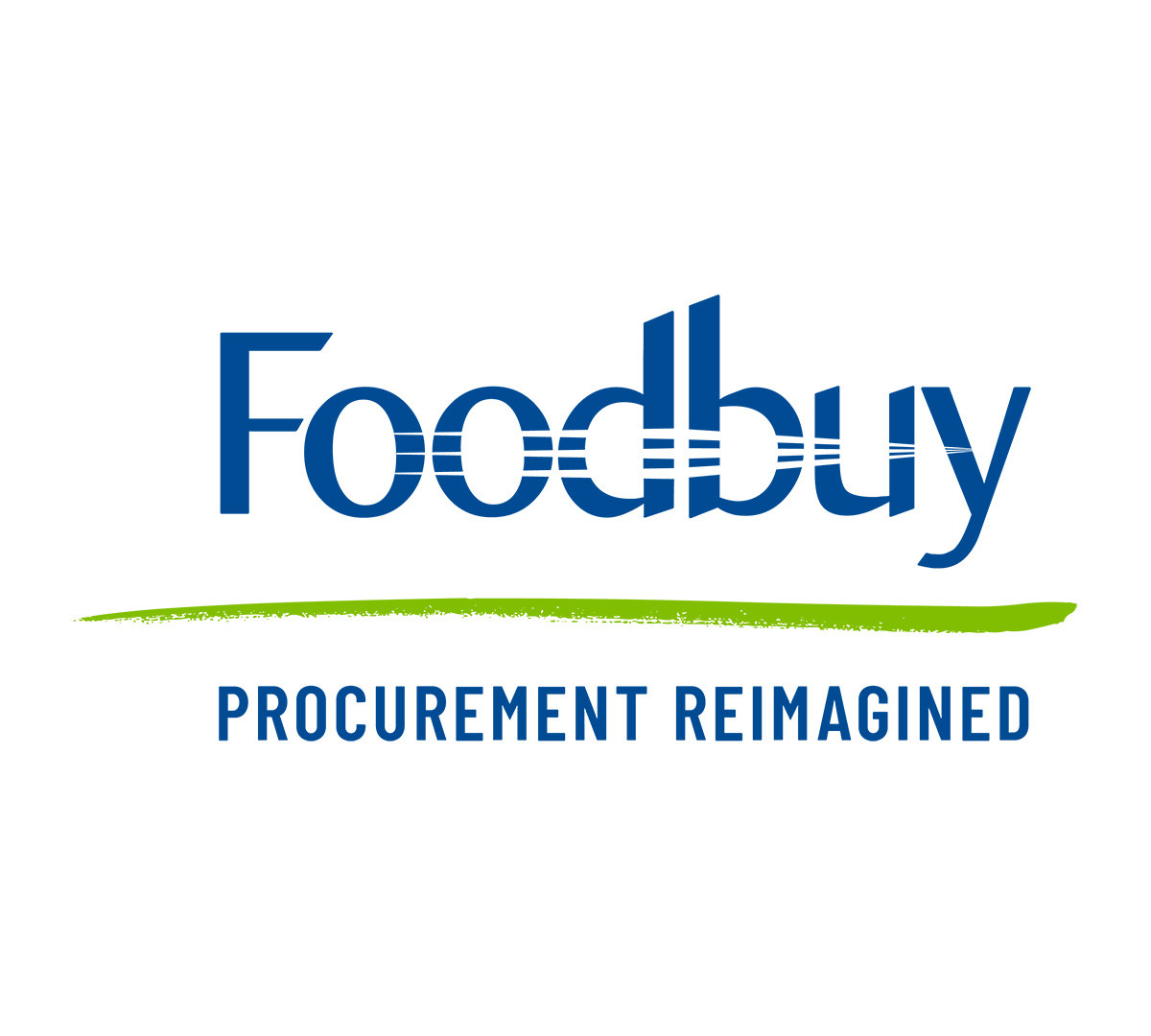
Westpak went above and beyond to support us with a recent project, ensuring all items were delivered in full and to the highest possible standard. Everything from the efficiency, dedication, level of support, detail and accountability they showed throughout the project impressed us. Thank you team!
Show more ▼
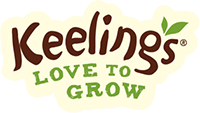
Diana Thompson
TitleAlways helpful and willing to find things that are not available off the shelf... keep you informed of how things are going and when products are available.
Show more ▼

Louisa Mariconda-Cain
Placing orders are always quick and easy, staff are always very helpful and do their best to get you what you require as quick as possible.
Show more ▼

Sean Burrows
Very helpful people, any inquiry's they reply very fast. Very good company to work with.
Show more ▼
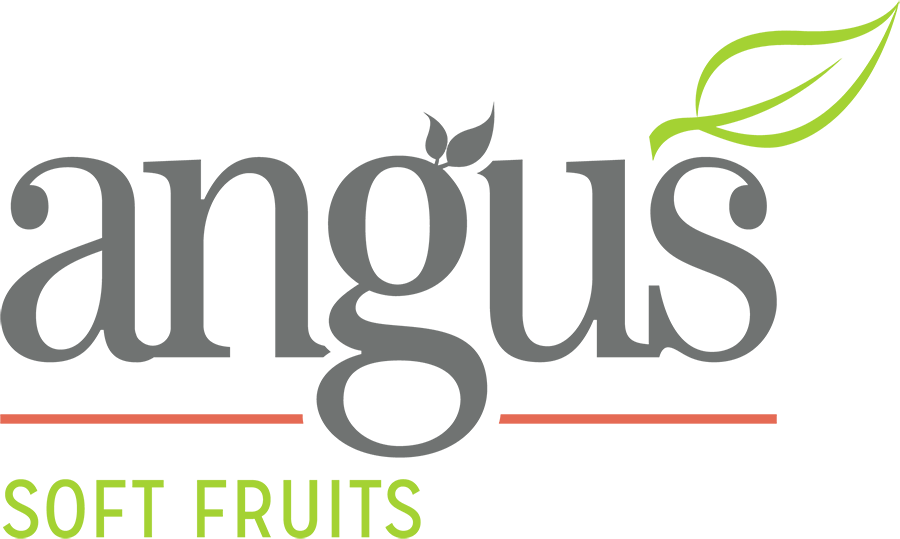
Peter Freckelton
I have been working with Westpak for a number of years now. The products are high quality and delivery always on time. They are always very helpful when trying to source new products and will do everything they can to meet our needs.
Show more ▼
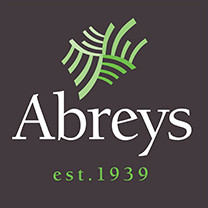
Scarlett Carr
We deal with Mihaela and she is very friendly and efficient. Great service as always.
Show more ▼
Alexandra Carmen Cufoian
Great working with WestPak, always doing their best to help.
Show more ▼
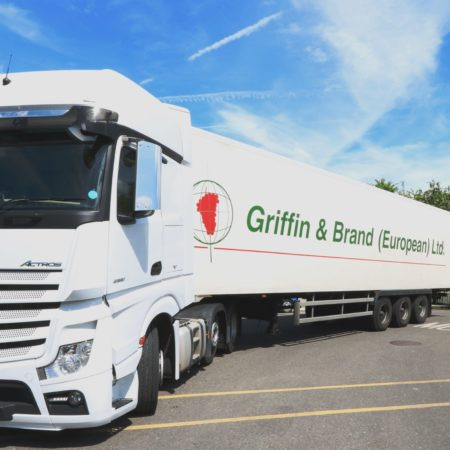
Nilima Sherpa
Responds quickly to emails and requests. Never had to chase them about the delivery, always kept us informed.I will continue to use their services and would recommend them to others as well.
Show more ▼

John Oldham
Westpak offer an efficient and reliable service for our packaging consumables and I would happily recommend them to others.
Show more ▼

Lizzie Brookes
Excellent customer service, especially Ketsia, who is always very helpful.
Show more ▼

Cameron Maclean
Always very professional, helpful and on time. I have had only good experiences with Westpak.
Show more ▼
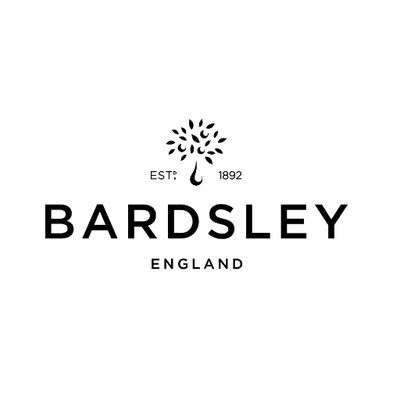
Veni Lukacs
I have only positive experience with the business! Good communication and excellent service!
Show more ▼

David McCormack
A pleasure to deal with - helpful, good product knowledge - and for development work - very logical thinkers. Would highly recommend...
Show more ▼
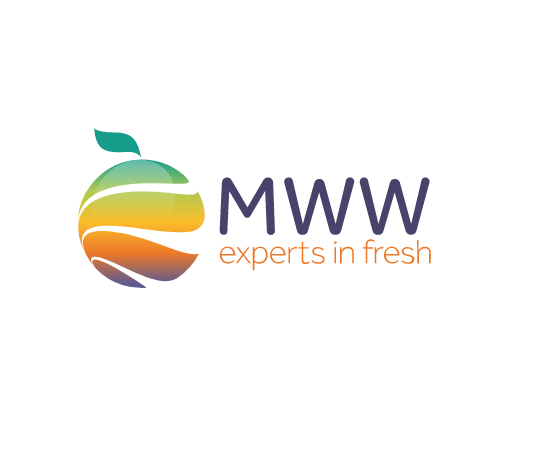
Adrian Yates
A pleasure to deal with the guys at Westpak having been suppliers to us for many years. Always happy to help and bringing innovative ideas to the table. Thank you to Seth, Jim, Ketsia and the rest of the team.
Show more ▼

Antony Taylor
Turners have been a customer of Westpak for 15 years, we've gone through a lot of change in that time serving different commodities to different multiples, and we've always found a job that needed something that Westpak was there for and ready to supply. I hope this great relationship continues for many more years. Keep up the great work and service.
Show more ▼
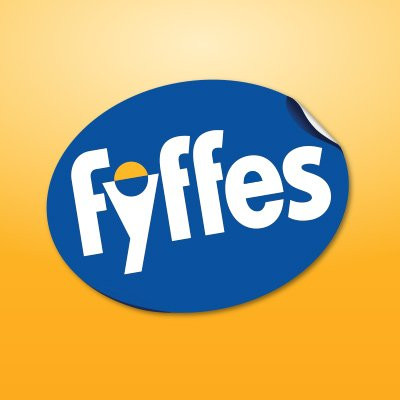
Simon Yendley
All the team at Westpak are always very helpful from the start of the ordering process until the delivery is completed, everyone is very knowledgeable and always do their best to facilitate any requests.
Show more ▼

Richard Bryant
We have worked with Westpak on a project to move away from supply in plastic punnets to a new card format, Seth has been supportive and informative throughout the process and we look forward to the launch early next year.
Show more ▼
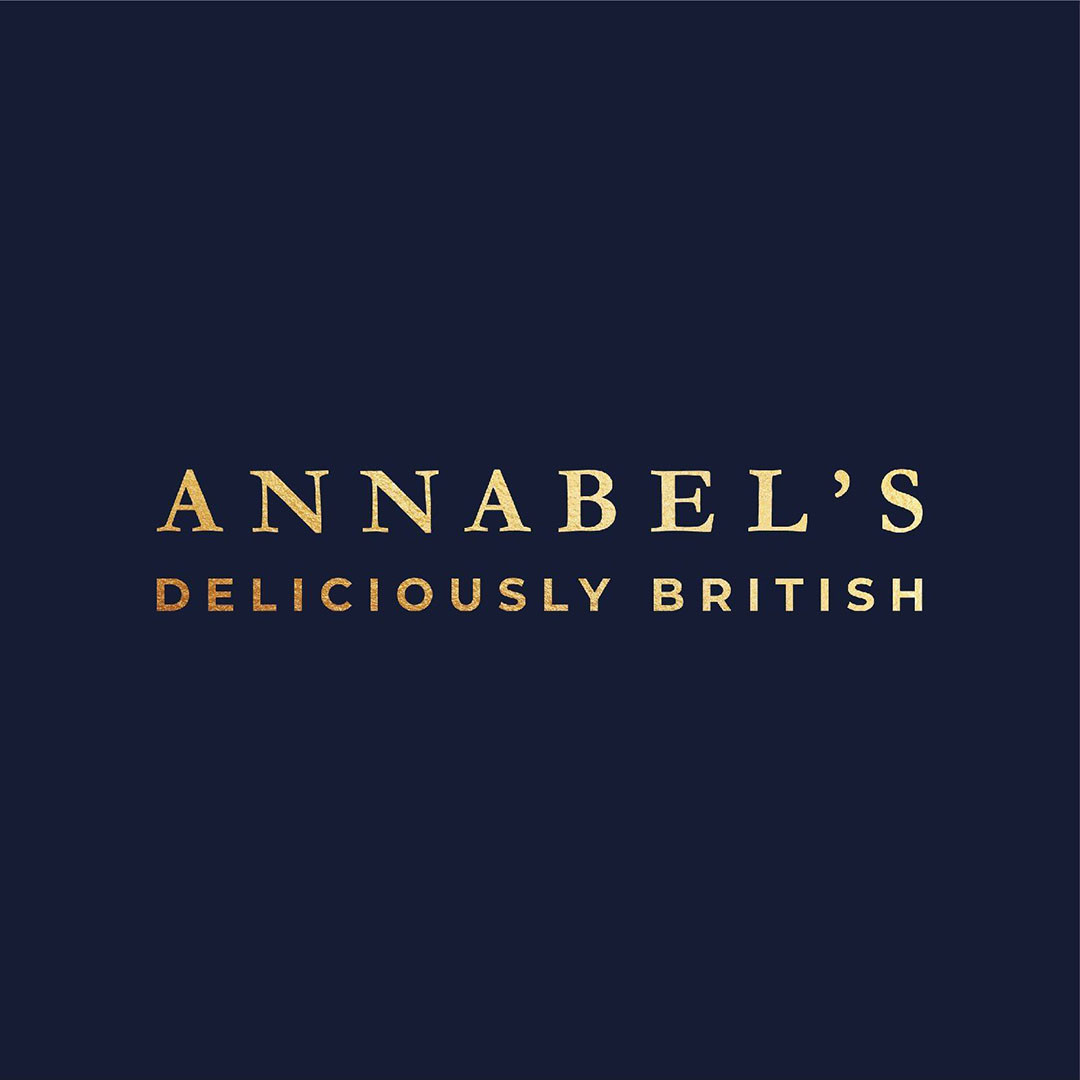
Annabel Makin-Jones
We have been dealing with Westpak for a number of years for our packaging and we always receive excellent service from Amos.
Show more ▼

Managing Director
[email protected]Seth has been with the Westpak for almost 20 and has been closely involved with various areas of the business. As Managing Director, Seth is responsible for the Westpak’s overall direction and vision. This remains rooted in dedicated customer service coupled with an innovative, responsive approach. Seth has a highly technical product knowledge and understanding of the issues and opportunities the wider industry faces which, in turn, is applied to the needs of Westpak’s clients.
Show more ▼

Key Account Manager
[email protected]With over 13 years of experience at Westpak alone, Jim beings a wealth of expertise to the position of key account manager. Jim has forged many long-standing client relationships. From finding ideal solutions for urgent packaging requirements to advising customers on their current and future needs, Jim offers essential support for our customer base.
Show more ▼

Key Account Manager
[email protected]Amos manages a range of key customer accounts, offering expert advice on the latest industry developments. He also works with the wider supply chain, helping introduce innovative products. Amos brings an open-minded approach to finding the best possible solution and draws upon 7 years of experience at Westpak, working across both supply chain and sales areas of the business.
Show more ▼

Business Development
[email protected]Silas acts as our wholesaler account manager across the rapidly evolving food service industry. He works alongside various parties in bringing innovative and sustainable products to the market. Silas also focusses on the clarity and speed of communication with his clients, ensuring they receive exactly that they need with precise timing and organisation.
Show more ▼

Customer Accounts
[email protected]Mihaela recently joined Westpak as our customer account manager and is responsible for the strong, personable relationships with our customers which is so critical to Westpak’s approach and values. Mihaela is committed to delivering the best possible solutions for her customers, offering a positive approach underpinned by excellent communication. Mihaela has over 10 years of previous experience in customer service, several years of which spent in customer account management roles.
Show more ▼

Strategic Sourcing Manager
[email protected]As our strategic sourcing manager, Lucas works with some of the industry’s most innovative manufacturers, exploring new possibilities in sustainable packaging design and manufacturing practices. By continuing to forge new collaborative relationships with the world’s most forward-thinking suppliers, we have recently been able to introduce a number of exciting new packaging technologies into the UK grocery and foodservice markets.
Show more ▼

Supply Chain Manager
[email protected]As Westpak’s purchasing and supply chain manager, Kelly looks after multiple aspects of our operations including our supplier relationships, product quality and transport, and warehouse logistics. Kelly also works collaboratively with our sales team, helping to seamlessly fulfil customer requests. With a background in engineering, Kelly takes a holistic view of the business as a system, identifying key areas for refinement as part of commitment to continuous improvement.
Show more ▼

Supply Chain Manager
[email protected]Rachel will also be managing supplier relationships, logistical operations and transport management, providing additional support to our supply chain management. Rachel also works collaboratively with our sales team, helping to seamlessly fulfil customer requests.
Show more ▼

Marketing Manager
[email protected]Chris has over 10 years of marketing experience and has worked across a broad range of industries. Chris is a hands-on, technical marketing professional and is responsible for all our marketing activities. He provides a particular focus on managing our digital presence, ensuring the online experience we provide for our customers is best it can possibly be.
Show more ▼

Customer Service
[email protected]Ketsia has provided fantastic customer service at Westpak for over 4 years. She makes sure all our customers are served in a highly professional manner, manage enquiries with total accuracy. Ketsia also prides herself on her quick and clear communication with our customers, keeping them fully updated and informed on the status of their various orders.
Show more ▼

Accounts
[email protected]Jane is responsible for the accurate keeping of the business’s transactions and other essential financial reporting. She brings over 35 years of strong experience in book-keeping and credit control. Jane is renowned for an incredibly high level of attention to detail and precision in her work.
Show more ▼